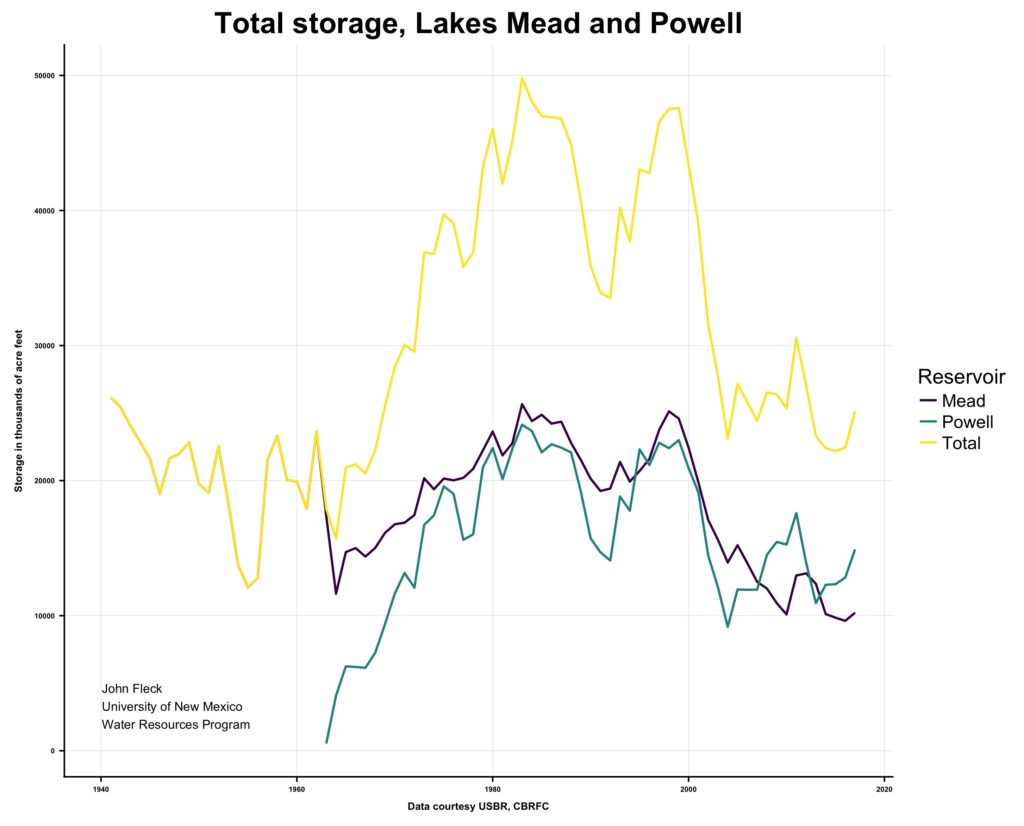Yes, a good snowpack helped us this year in the Colorado River. But the numbers are clear – reductions in water use made a far larger contribution to the good news on the river this year.

Projected year-end Colorado River storage
This week’s official Bureau of Reclamation declaration that we won’t have a 2018 Colorado River shortage got a lot of press, much of it attributing the success as Brandon Loomis did to a good snowpack in the Rockies:
A snowy winter in the Rocky Mountains helped Colorado River water users escape a shortage for the next year and likely for at least two more, federal water managers project.
But attributing it just to weather misses what I think is the most important part. Here’s Henry Brean:
Above-average flows in the Colorado River helped keep Lake Mead out of shortage for another year, but the real news is on the demand side.
Over the past year, Nevada, Arizona and California combined to use less than 7 million acre-feet of river water for the first time in 25 years.
Colby Pellegrino, Colorado River programs manager for the Southern Nevada Water Authority, said the decline in demand is proof that conservation efforts on the Colorado are making an impact.
The last time the three lower basin states combined to use less than 7 million acre-feet of river water was in 1992, when the region was home to roughly 7 million fewer people than it is now.
“We’ve successfully decoupled our economic prosperity from our water use,” Pellegrino said.
The numbers support this interpretation. Total runoff this year looks like it’ll end up at about 1.4 million acre feet above average. But total combined storage in Lake Mead and Lake Powell will end up about 2.7 million acre feet above average.
Total Lower Basin Colorado River water use – Arizona, Nevada, and California – is forecast to be 6.6 million acre feet this year, the lowest it’s been since 1992.
In the Upper Basin, in a year with supply 1.4 million acre feet above average, Lake Powell is rising by 2.1 million acre feet. In other words, even if this hadn’t been an above average year, we’d be ahead of the game.
This is a tricky time, because we can’t be complacent about this and use it as an excuse to relax and assume all is well and we can start taking more water from the river. See Udall and Overpeck on hot droughts and climate change for a reminder of the challenges ahead. But it’s a clear message that the things we’ve been doing over the last decade or more – read my book! – are moving us in the right direction.

Great> Does that mean we now after years of waiting divert some water to the Salton Sea to avoid a health and environmental disaster?
George –
Not sure if your question was rhetorical or not, but on the chance that it was not, the answer is no.